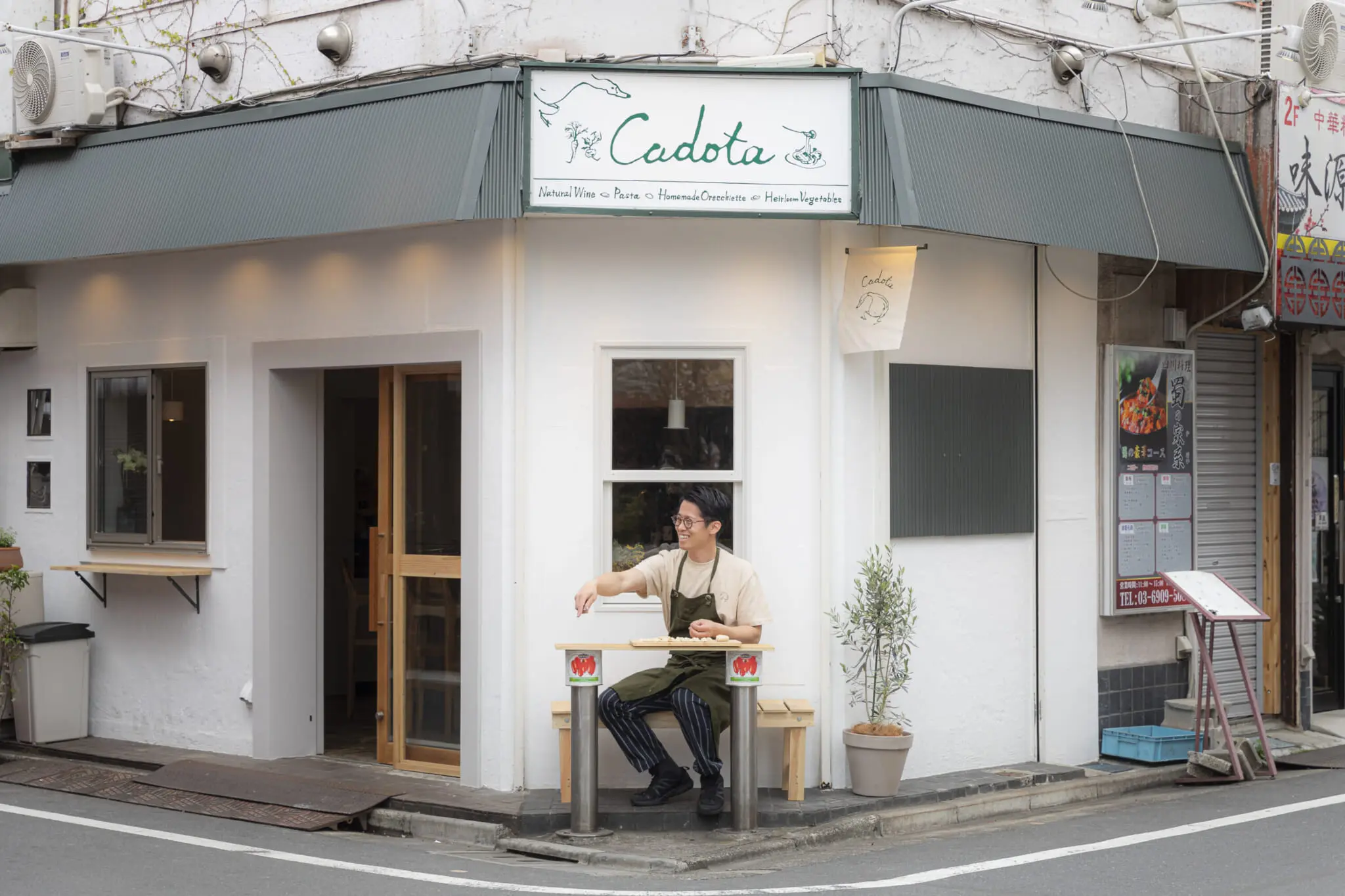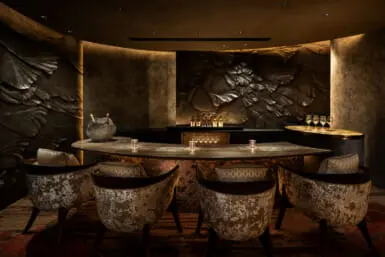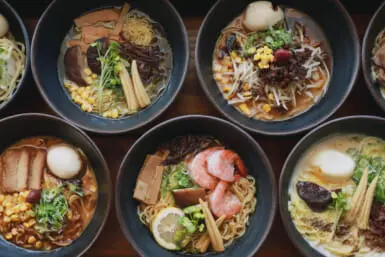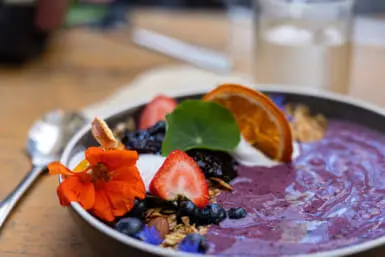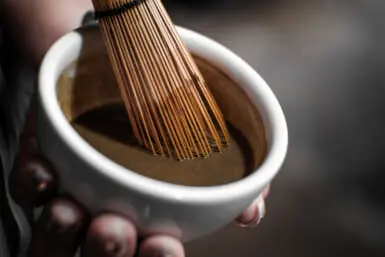Artisans leave a mark wherever they work. Every piece they painstakingly create and mold leaves the imprint of their dedication to their craft. From metalworkers and woodworkers to kimono makers and swordsmiths, their hands are all over the end result.
When I watch chef Naoyuki Arai at his new restaurant Cadota in Higashi-Nagasaki thumb and press small bits of dough and shape them into orecchiette, his signature is apparent in every single piece. At one point, he looks up, smiles and says, “I know every piece. I recognize them because I made them myself.”
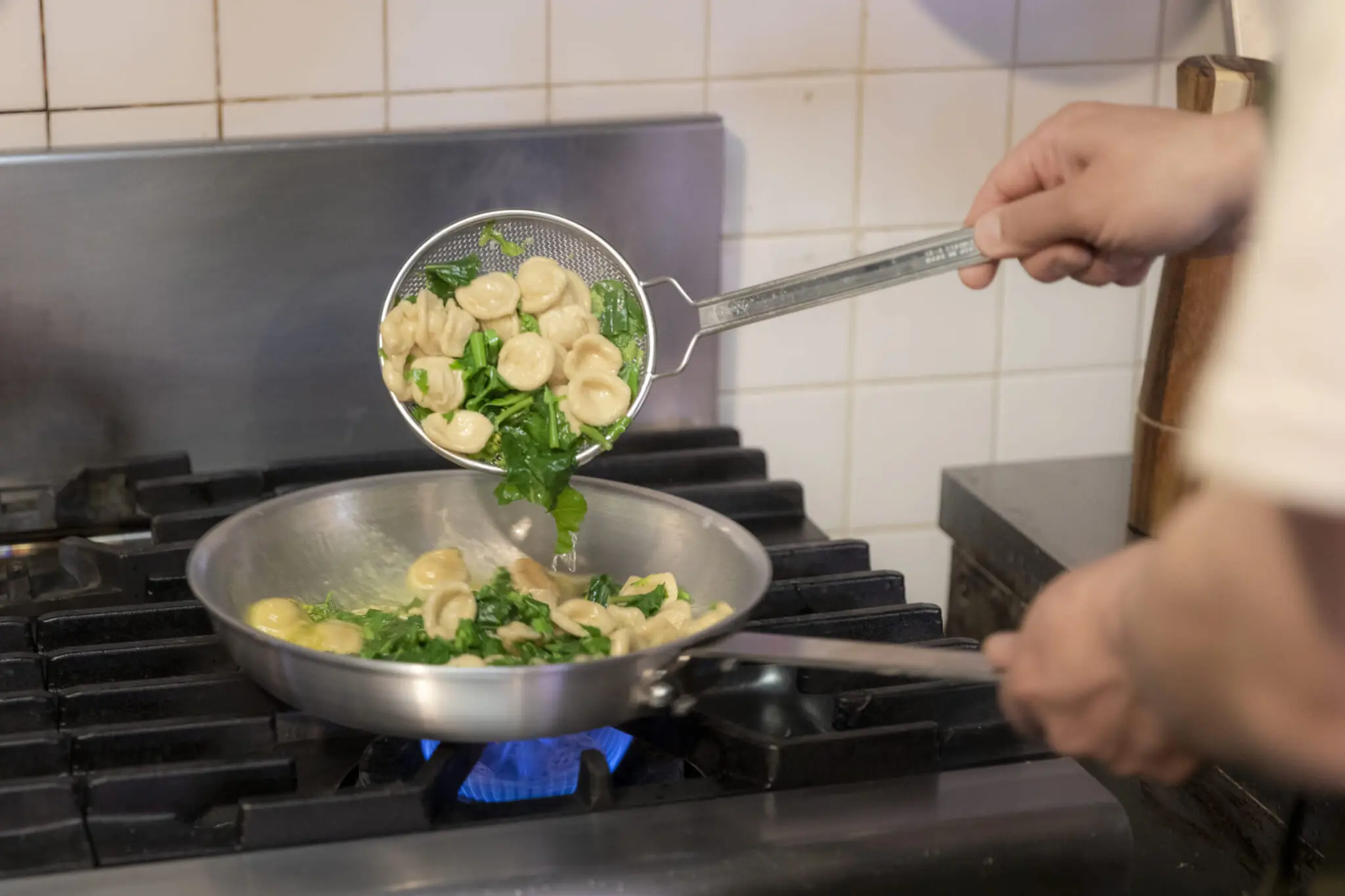
Cooking with Heart in Higashi-Nagasaki
Handsome, absolutely dedicated to his craft and a trailblazer of local farming and sustainability, Arai is the future of Japanese cooking. There’s no artifice here, no smoke and mirrors (literal or metaphorical), only great handmade food prepared with heart and soul — and a chef with a passion for southern Italian food and the best Japanese organic ingredients.
Now, if you are a keen social observer, you’ll know that Higashi-Nagasaki is very much an area in ascendancy. Much loved by Monocle, Popeye and other trend-setting magazines, it is seriously beginning to growl and flex its ample soft-power muscles. With coffee shop Mia Mia, ontayaki pottery store Sonomono and brilliant avant-garde music bar Light Factory, it’s a neighborhood that has transformed from a sleepy suburb of Ikebukuro into an emerging cultural hub. And Arai’s Cadota is another reason to visit and feel the area’s arrival as a must-visit destination in Tokyo.
Arai, former chef at Life Son in Sangubashi, Fra in the nearby Chihaya neighborhood and La Strega and Peppe Zullo in the southern Italian region of Puglia, set up shop in Higashi-Nagasaki in spring of this year with the aim of bringing southern Italian cuisine made with locally farmed Japanese ingredients to locals who have, until now, frequented chains and uninspired local establishments.
It’s clear when speaking with Arai that his quarter-year stint in Puglia has had a profound impact on his outlook on cooking and perhaps his approach to life itself. He explains that his time in Puglia taught him that a love of the land is foremost in importance.
“Italians love their land and environment more than Japanese people,” he says. “I worked at a one-Michelin-star restaurant called La Strega that was a little bit gastronomic, but the chef there invited me to his home, and I learned from his grandmother how to make orecchiette. She was 90 years old and gathered at the house with her friends. They made orecchiette together, and I joined them. It was such an amazing experience.”
The Saitama native, perhaps with a slight display of showmanship, makes some of his orecchiette and other pasta every day on the table that sits outside the restaurant. Minutes prior to the interview, I watched him press and shape the pasta as locals walked and cycled by, then backtracked to watch intently as Arai kneaded the dough. Some asked him questions, some gawked, some inquired about the restaurant and some simply admired the sheer artistry and dedication on show.
Arai explains this slightly unorthodox approach, saying that “many people don’t know about orecchiette. Most people like spaghetti, but I show them how to make orecchiette outside on the street. They have become more interested in it now. I also explain about the farmers involved in the food we serve here at Cadota.”
His passion is palpable, and he states his intention outright: “I want to introduce the joy of orecchiette to the local people here in Higashi-Nagasaki. Most pasta in restaurants is made using a machine, but we don’t have a machine. All the pasta is made by hand, by my hands.”
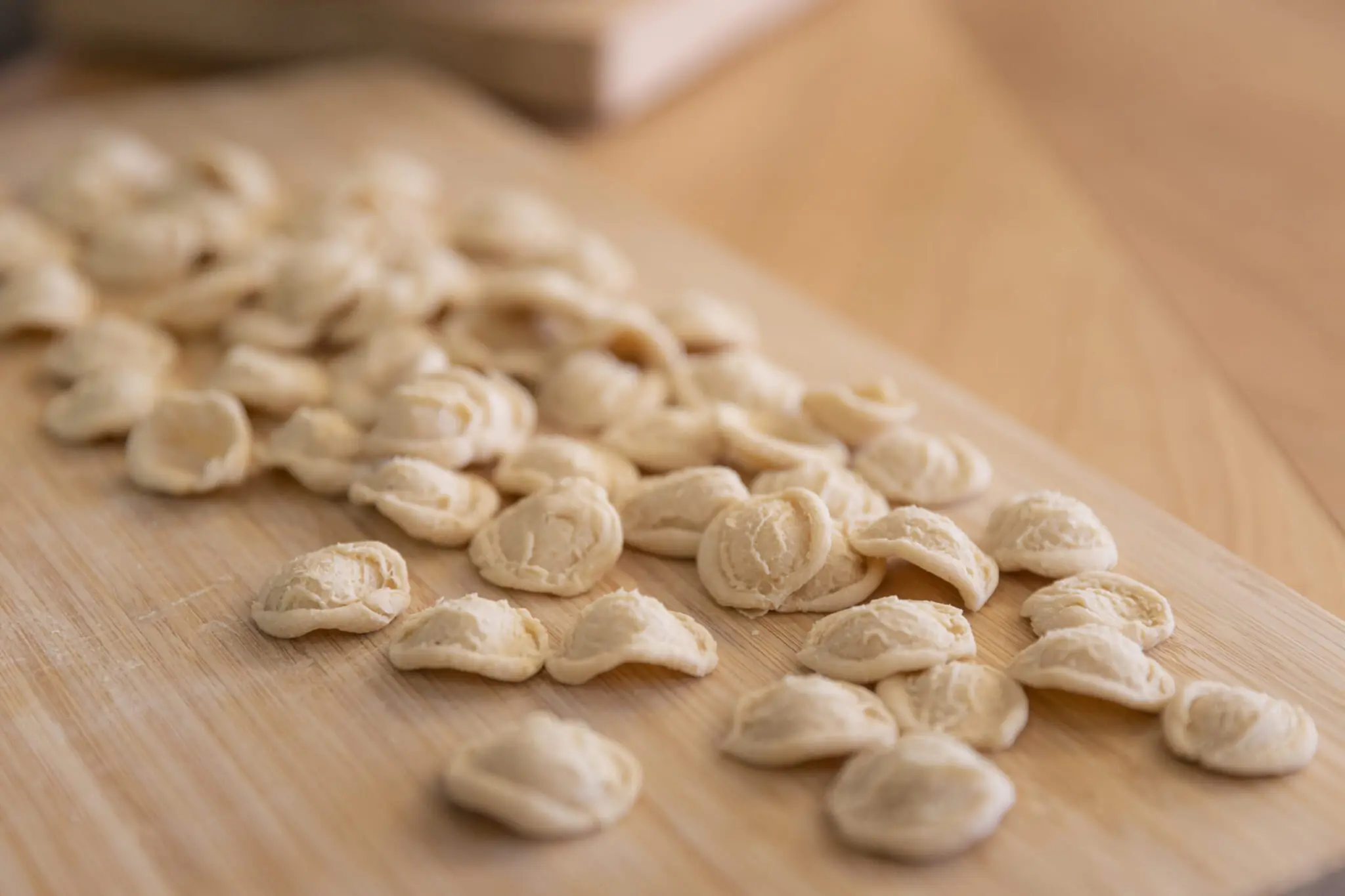
A Connection to the Land
Organic and sustainable ingredients are at the heart of Cadota, named for a variety of fig tree. When I ask Arai about the significance of organic food to him, he talks with real zeal about health, environment, family and returns again to his time in Italy as a real source of inspiration for his restaurant and outlook on life.
“The biggest reason I prefer organic food is my sons,” he explains. “I have three kids. The eldest is 6 and the twins are 3. All boys. My thinking about food changed when they were born. If I lived alone, I wouldn’t mind so much whether vegetables were organic or not. But if I give food to my kids, then I think organic is better for them.”
He continues, saying, “I saw organic farmers in Puglia and I worked at two restaurants there, La Strega and Peppe Zullo. Peppe Zullo was such a big place. It had a huge mountain outside and a massive field. They grow all their vegetables in the field. They have grapevines, olive trees, cattle, pigs and chickens — it’s all farm-to-table. They can make everything from their local environment. I was so surprised.”
Arai’s family have been farmers for 300 years, and he is the 19th generation to have tended to the family’s land in Saitama Prefecture. Currently, he has fig trees, ducks and chickens, and he plans to add goats in the future as they’re known to be good land keepers. Evoking the idea of a profound and unbreakable pact between humans and nature, he tells me that if you have a love of your land and a respect for your environment, your land will, in turn, look after you.
When we turn to discussing the menu and what customers should expect from a visit to Cadota, Arai points to what looks, initially, like a massive piece of Iberico ham. He quickly corrects me and tells me that the ham is sourced from one of Japan’s oldest and most respected ham makers. The maker is located in Saitama, and the ham is made by a man in his 80s who’s been working with the meat for approximately 50 years.
While meat is on the menu, vegan options are available on request. Arai tells me that he can easily turn any of the dishes into vegan meals, and he’s more than happy to do so.
With the menu, he says, “I want to make a conscious change in the thinking of what we eat. Because of the environment and also a sense of taste. So I use duck instead of chicken, wild boar instead of pork and venison instead of beef. They are natural animals, all free range.”
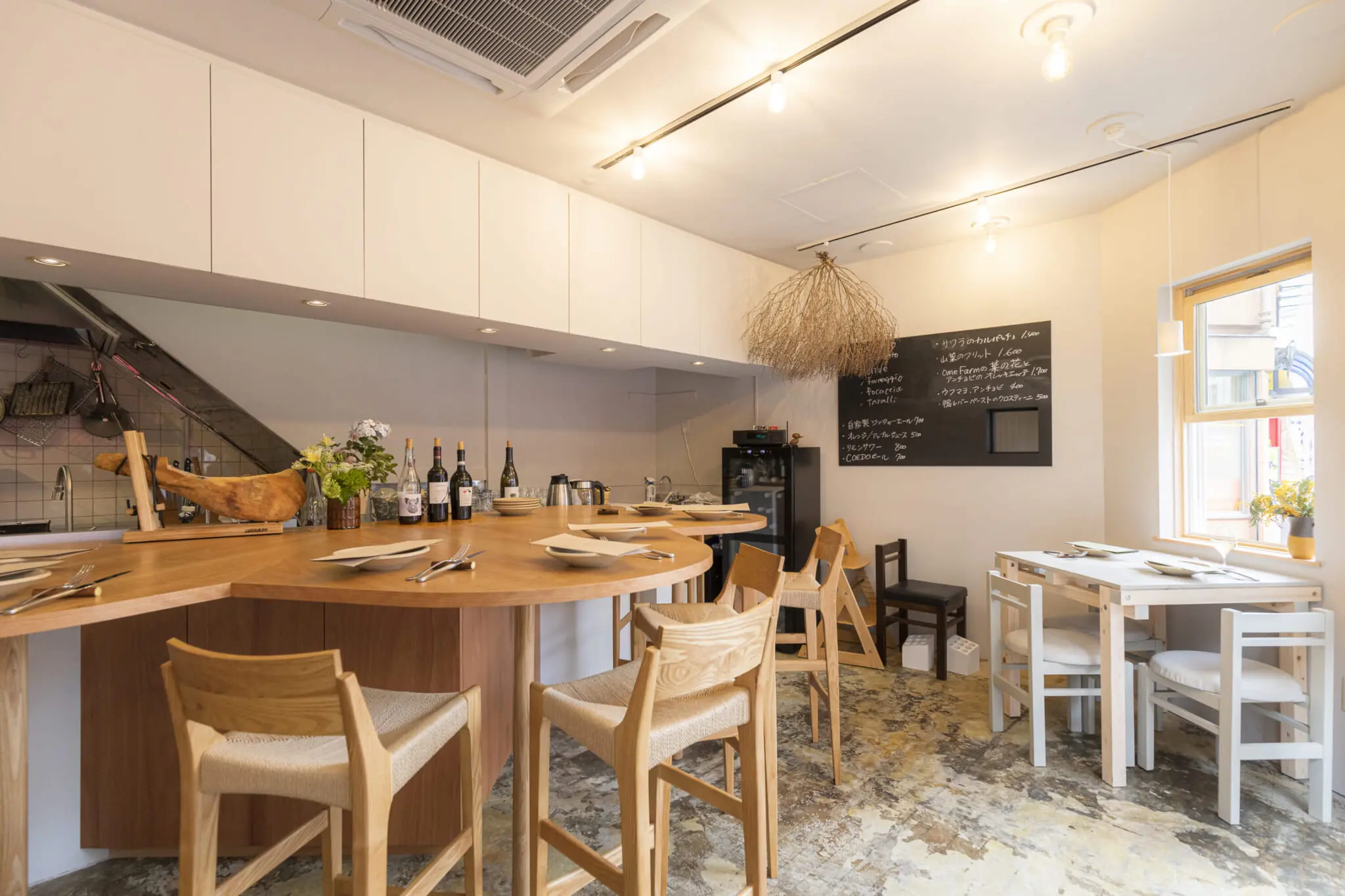
Creating an Amiable Atmosphere
The small and comfortable restaurant was designed by Rie Allison, who also runs and designed the nearby Mia Mia coffee shop. Arai had only two requests for Allison when looking for a suitable space for Cadota: It needed to be about 50 years old with character, and it needed to be able to last for another 50 years. The simple but elegant design is perfect for families, couples and single diners and has enough space to create unforgettable nights of the sort you look back on with genuine fondness in the backstreets of your memories.
Cadota, just seconds away from Higashi-Nagasaki Station on the Seibu Ikebukuro Line, has an enviable location. “It’s a small station and has no big department stores. It has plenty of small streets and people talk to each other easily,” says Arai. “There are many pedestrians, and the most important thing is the great atmosphere. This is mainly due to the influence of Mia Mia. That’s maybe the biggest reason. It’s a quiet area, so I think the locals needed a restaurant to gather everyone together. The location is perfect for me.”
As we finish the interview, a few locals pop by and say hello. Some take pictures and offer congratulations to Arai, who has become a popular figure in the area. As we end the interview, he goes back to his beloved orecchiette and, with a smile on his face, proceeds to knead, press and shape. The series of swift movements looks so effortless, it seems as though he’s been doing this for decades upon decades. It’s a testament to this humble Japanese chef’s deep respect and utter precision as he takes the reins from his Italian friends.

